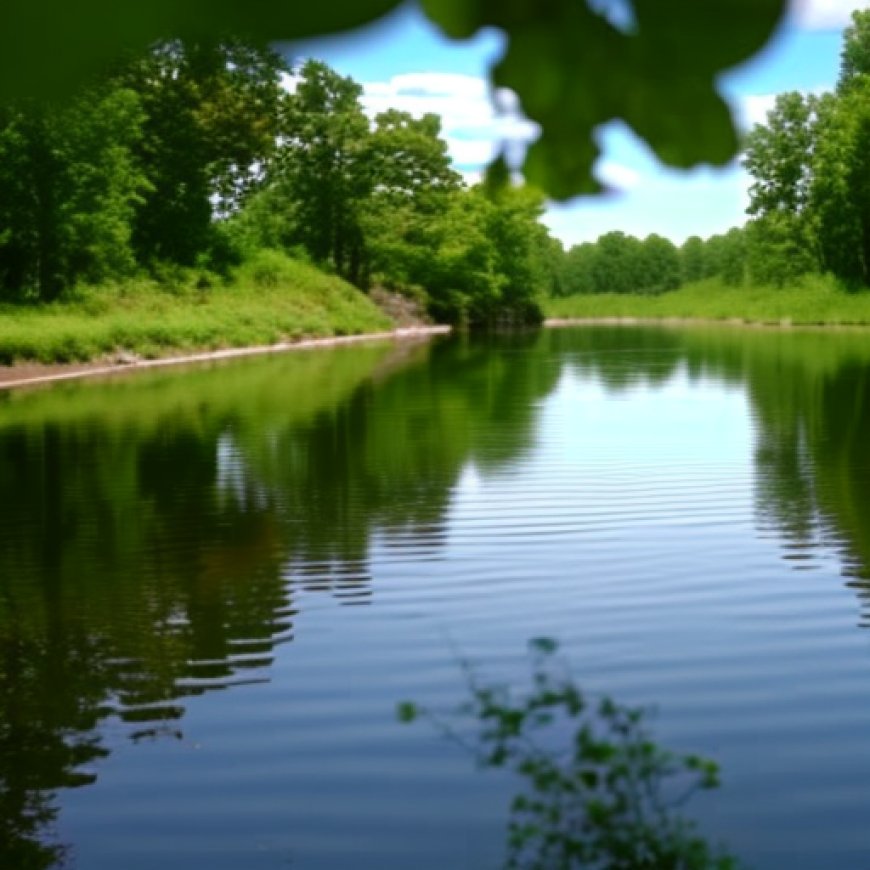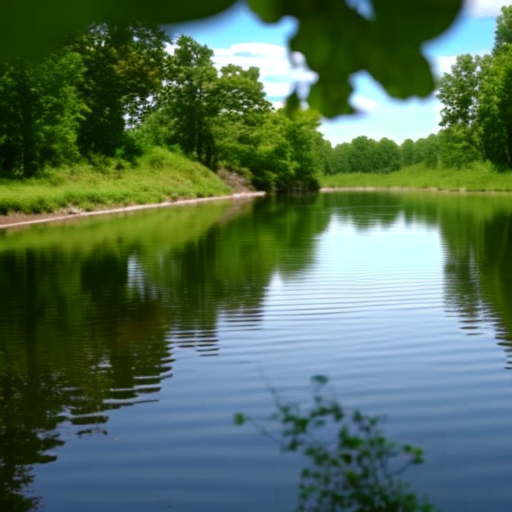Water levels in the Eastern Snake Plain Aquifer are back down
Water levels in the Eastern Snake Plain Aquifer are back down Boise State Public Radio


Replenishing the Eastern Snake Plain Aquifer: A Report on Sustainable Development Goals
In 2015, cities and farmers collaborated to replenish the declining Eastern Snake Plain Aquifer. Despite their efforts, water levels are back down, almost reaching pre-agreement lows. However, state water managers warn that the situation could have been much worse.
The Eastern Snake Plain Aquifer: A Vital Resource
The aquifer, one of the largest in the U.S., lies beneath eastern and south-central Idaho, providing drinking water to about 300,000 people and irrigation for over two million acres of farmland.
However, since the 1950s, the aquifer has been declining primarily due to increased efficiency in irrigation practices, reducing the amount of water naturally seeping into the ground, as well as urban growth. The growing demand eventually outpaced supply, leading to legal disputes that brought stakeholders together to work out a solution.
Efforts to Revive the Aquifer
In the first few years after the 2015 Eastern Snake Plain Aquifer (ESPA) agreement, aquifer levels began to climb. Snowy winters and the state’s goal of sending an average of 250,000 acre-feet of Snake River water back into the aquifer each year, with funding from the legislature, contributed to this improvement. Additionally, farmers relying on groundwater agreed to reduce their pumping.
Now, after a few years of severe drought, the aquifer has dropped once again and is currently about 300,000 acre-feet below 2015 levels, according to measurements taken by the Idaho Department of Water Resources this spring. Last year alone, the aquifer lost one million acre-feet of water.
Impact of Sustainable Development Goals
Water managers emphasize that the 2015 agreement’s recharge and pumping reduction efforts have prevented a worse scenario. Without these efforts, the situation would be significantly worse.
However, the dry years have hindered the achievement of benchmarks intended to reverse the aquifer’s decline. The state has recharged slightly less water on average per year than it aimed for, partly due to limited excess water availability during droughts. Additionally, groundwater users have not reduced their consumption enough, according to department reviews.
To meet the targets outlined in the 2015 agreement, groundwater levels would need to increase by nearly 10 feet by 2026.
Expanding the Recharge Program
One solution the state is focusing on is expanding its recharge program, particularly in the northern part of the aquifer towards Idaho Falls. Four new sites are being developed, and three could be ready next spring. These additions would provide more opportunities to replenish the aquifer.
However, recharge still depends on strong snowpack, and climate change has made this less predictable. It is expected that a higher proportion of spring precipitation will fall as rain instead of snow.
Despite this challenge, the state is now better equipped to put excess water back into the aquifer when good water years occur.
Conclusion
The declining water levels in the Eastern Snake Plain Aquifer highlight the importance of sustainable development goals. Efforts to replenish the aquifer have had some success, but ongoing challenges such as drought and climate change require continued action. By expanding recharge programs and promoting responsible water consumption, stakeholders can work towards meeting the targets outlined in the 2015 agreement and ensure the long-term sustainability of this vital resource.
Sources:
- Idaho Department of Water Resources
- Boise State Public Radio
SDGs, Targets, and Indicators
-
SDG 6: Clean Water and Sanitation
- Target 6.4: By 2030, substantially increase water-use efficiency across all sectors and ensure sustainable withdrawals and supply of freshwater to address water scarcity and substantially reduce the number of people suffering from water scarcity
- Indicator 6.4.2: Level of water stress: freshwater withdrawal as a proportion of available freshwater resources
-
SDG 11: Sustainable Cities and Communities
- Target 11.3: By 2030, enhance inclusive and sustainable urbanization and capacity for participatory, integrated, and sustainable human settlement planning and management in all countries
- Indicator 11.3.1: Ratio of land consumption rate to population growth rate
-
SDG 12: Responsible Consumption and Production
- Target 12.2: By 2030, achieve the sustainable management and efficient use of natural resources
- Indicator 12.2.2: Domestic material consumption, domestic material consumption per capita, and domestic material productivity
-
SDG 13: Climate Action
- Target 13.1: Strengthen resilience and adaptive capacity to climate-related hazards and natural disasters in all countries
- Indicator 13.1.1: Number of deaths, missing persons, and directly affected persons attributed to disasters per 100,000 population
Analysis
1. The issues highlighted in the article are connected to SDGs 6, 11, 12, and 13.
2. The specific targets under those SDGs that can be identified based on the article’s content are:
- Target 6.4: Increase water-use efficiency and ensure sustainable withdrawals and supply of freshwater
- Target 11.3: Enhance inclusive and sustainable urbanization and human settlement planning
- Target 12.2: Achieve sustainable management and efficient use of natural resources
- Target 13.1: Strengthen resilience and adaptive capacity to climate-related hazards
3. The indicators mentioned or implied in the article that can be used to measure progress towards the identified targets are:
- Indicator 6.4.2: Level of water stress: freshwater withdrawal as a proportion of available freshwater resources
- Indicator 11.3.1: Ratio of land consumption rate to population growth rate
- Indicator 12.2.2: Domestic material consumption, domestic material consumption per capita, and domestic material productivity
- Indicator 13.1.1: Number of deaths, missing persons, and directly affected persons attributed to disasters per 100,000 population
Table: SDGs, Targets, and Indicators
| SDGs | Targets | Indicators |
|---|---|---|
| SDG 6: Clean Water and Sanitation | Target 6.4: By 2030, substantially increase water-use efficiency across all sectors and ensure sustainable withdrawals and supply of freshwater to address water scarcity and substantially reduce the number of people suffering from water scarcity | Indicator 6.4.2: Level of water stress: freshwater withdrawal as a proportion of available freshwater resources |
| SDG 11: Sustainable Cities and Communities | Target 11.3: By 2030, enhance inclusive and sustainable urbanization and capacity for participatory, integrated, and sustainable human settlement planning and management in all countries | Indicator 11.3.1: Ratio of land consumption rate to population growth rate |
| SDG 12: Responsible Consumption and Production | Target 12.2: By 2030, achieve the sustainable management and efficient use of natural resources | Indicator 12.2.2: Domestic material consumption, domestic material consumption per capita, and domestic material productivity |
| SDG 13: Climate Action | Target 13.1: Strengthen resilience and adaptive capacity to climate-related hazards and natural disasters in all countries | Indicator 13.1.1: Number of deaths, missing persons, and directly affected persons attributed to disasters per 100,000 population |
Behold! This splendid article springs forth from the wellspring of knowledge, shaped by a wondrous proprietary AI technology that delved into a vast ocean of data, illuminating the path towards the Sustainable Development Goals. Remember that all rights are reserved by SDG Investors LLC, empowering us to champion progress together.
Source: boisestatepublicradio.org

Join us, as fellow seekers of change, on a transformative journey at https://sdgtalks.ai/welcome, where you can become a member and actively contribute to shaping a brighter future.







